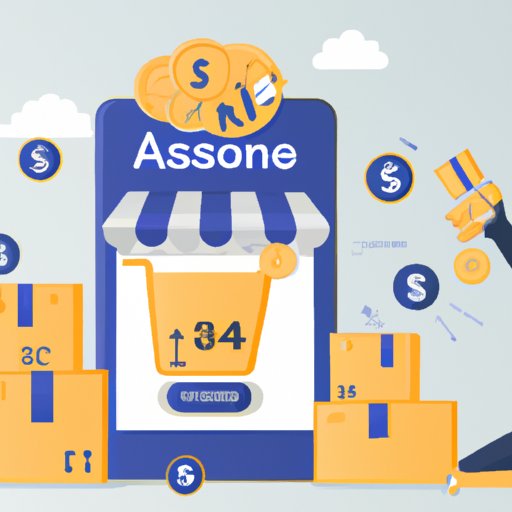Introduction
An Amazon resale business has the potential to be a lucrative venture. With the right strategies in place, you can capitalize on the billions of dollars being spent daily on Amazon and make a profit from reselling products. In this guide, we’ll provide an overview of what it takes to get started and the steps you need to take to launch your own Amazon resale business.

Overview of Amazon Resale Business
At its core, an Amazon resale business is a type of ecommerce business. You source products from various vendors, list them for sale on Amazon, and then ship them out to customers when orders are placed. Depending on your chosen business model, you may also be responsible for fulfilling orders yourself.
Benefits of Starting an Amazon Resale Business
An Amazon resale business offers many benefits compared to other types of online businesses. For starters, Amazon is a trusted platform with established systems in place to handle everything from payments to customer service. This makes it easier to launch your business quickly, without having to build a website or worry about payment processing.
In addition, Amazon has a massive customer base that you can tap into. There are over 310 million active users on the platform and billions of dollars worth of transactions taking place each day. This means you have access to a large pool of potential customers, as well as plenty of opportunities to make sales.
Research the Market
Before you jump in and start selling, it’s important to do some research first. Take time to analyze the competitive landscape and identify potential opportunities. Look at the products that are already being sold on Amazon and see if there are any gaps in the market that you can fill.
Identify Your Niche
Once you’ve identified potential opportunities, it’s time to choose a product category and develop an understanding of the products and trends in that space. What kinds of products are currently popular? Are there any new products that you could capitalize on? What kind of pricing strategy should you use to remain competitive? Answering these questions will help you narrow down your focus and decide which products to sell.
Source Products
Now that you’ve identified your niche, it’s time to start sourcing products. Determine where you’re going to get your inventory from. Will you source from wholesalers, manufacturers, or drop shippers? It’s important to do some research to find reliable suppliers who can provide you with quality products at reasonable prices.
Once you’ve found potential suppliers, be sure to build relationships with them. This will help ensure that you have a steady supply of products and can get the best deals possible.

Create an Amazon Seller Account
Once you’ve sourced your products, it’s time to set up your Amazon seller account. Register as a seller on Amazon and familiarize yourself with the platform. Learn how to add products, manage orders, and interact with customers. Having a good understanding of how the platform works will help you run your business more efficiently.
Develop a Listing Strategy
The next step is to create listings for your products. Decide how you’re going to list them – as individual items or bundles? Optimize titles, images, and descriptions to make them stand out and attract customers. Make sure that all of your listings comply with Amazon’s terms of service.
Analyze Data and Adjust
Once you’ve launched your store, it’s important to keep track of your performance. Monitor sales and adjust pricing or listing strategies accordingly. If certain products aren’t selling, try adjusting the price or changing the description. Analyzing data will help you understand what’s working and what isn’t, so you can optimize your business for maximum profits.
Utilize Automation Tools
Finally, consider utilizing automation tools to save time and money. Fulfillment by Amazon (FBA) is a program that allows you to outsource order fulfillment to Amazon. This can free up your time and reduce costs associated with shipping and customer service. Additionally, automated repricing software can help you stay competitive by automatically adjusting prices based on market conditions.
Conclusion
Starting an Amazon resale business can be a great way to generate revenue. By doing your research, identifying your niche, sourcing products, creating listings, and utilizing automation tools, you can set yourself up for success. So, what are you waiting for? Get started today and take advantage of the huge potential that Amazon has to offer.
(Note: Is this article not meeting your expectations? Do you have knowledge or insights to share? Unlock new opportunities and expand your reach by joining our authors team. Click Registration to join us and share your expertise with our readers.)
